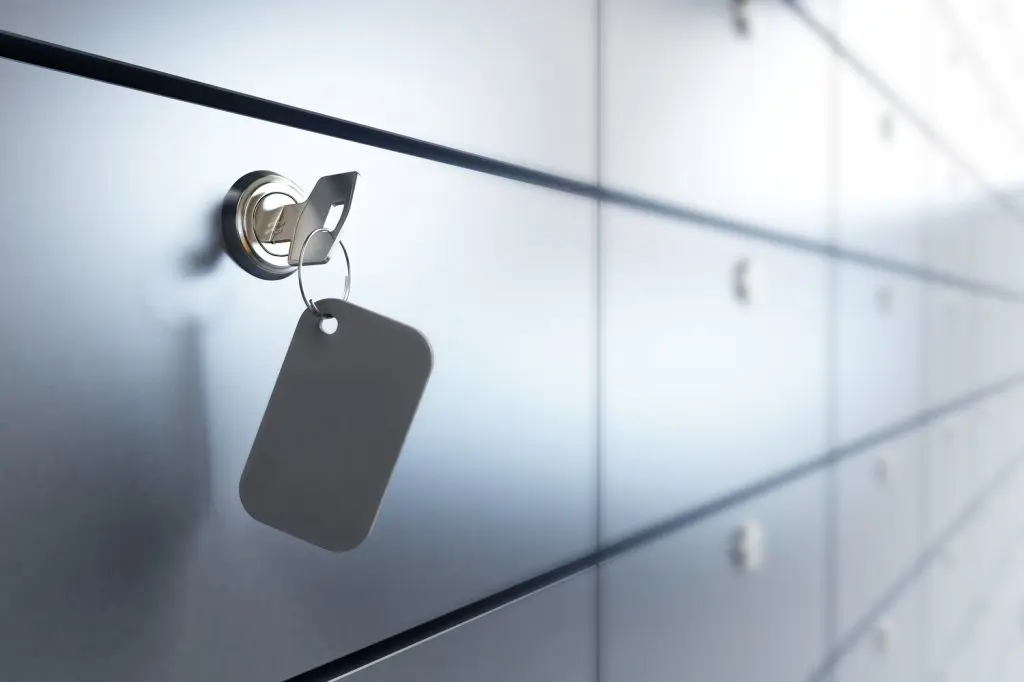Table Of Content
In this article, we delve into the world of bank safe deposit boxes, shedding light on their purpose, benefits, and the unparalleled security they provide.
We explore the key features that make them an indispensable choice for those seeking protection for their valuables, and address common concerns and misconceptions associated with their usage.
Additionally, we examine the procedures involved in acquiring and accessing a safe deposit box, as well as the responsibilities that come with their usage.
How Does A Safe Deposit Box Work?
A safe deposit box is a secure storage compartment offered by banks or other financial institutions to their customers. It is a private, individually assigned box that customers can rent to store valuable items and documents that require a high level of security. These boxes are typically stored in a bank's vault or other highly secure area.
Safe deposit boxes come in various sizes to accommodate different storage needs. They are made of durable materials, such as metal, and are equipped with a lock and key or a more modern electronic locking system. Only the authorized renter or co-renters have access to the box and its contents, ensuring privacy and confidentiality.
Safe deposit boxes come in various sizes to accommodate different storage needs. Common sizes include small, medium, large, and extra-large boxes. The exact dimensions may vary between banks, but as a general reference, small boxes may measure around 3″x5″, while large boxes can be around 10″x10″ or larger.
How Much Does A Safe Deposit Box Cost?
The cost of a safe deposit box varies depending on the size of the box, the location of the bank, and the bank's policies. In general, you can expect to pay anywhere from $50 to $300 per year for a safe deposit box.
Here are some factors that can affect the cost of a safe deposit box:
- Size of the box: Larger boxes are more expensive than smaller boxes.
- Location of the bank: Banks in urban areas tend to charge more for safe deposit boxes than banks in rural areas.
- Bank's policies: Some banks offer discounts for customers who have other accounts with the bank, such as a checking or savings account.

Which Bank Offer Safe Deposit Box?
Certain banks, such as Chase and Bank of America, Member FDIC, have made the decision to discontinue their safety deposit box services. These banks have cited reasons such as the high cost associated with providing the service and the space limitations in smaller branches.
Consequently, they have opted to no longer offer safety deposit boxes to their customers. This change reflects the evolving landscape of banking services and the challenges faced by financial institutions in maintaining and managing physical storage solutions.
However, there are some banks and credit unions that still offer a safe deposit box. For example:
- First Bank & Trust: The smallest box available of 3×5 Size comes in at $20, with the large 10” x 10” costing $65 annually.
- Columbia Bank: The smallest box available of 2×5 Size comes in at $25, with the large 10” x 10” costing $120 annually.
- Erie Federal Credit Union: The smallest box available of 3×5 Size comes in at $15, with the large 10” x 10” costing $100 annually.
Choosing A Safe Deposit Box: Which Things To Consider?
When choosing a safe deposit box, there are several important factors to consider to ensure that it meets your specific needs and requirements. Here are some key things to consider:
Size: Determine the size of the safe deposit box you need based on the items you plan to store. Consider the dimensions and capacity of the box to ensure it can accommodate your valuables comfortably.
Accessibility: Evaluate the accessibility options offered by the bank. Consider the bank's business hours and whether they align with your schedule. Some banks may provide extended access hours or even 24/7 access to their safe deposit boxes, which can be beneficial if you require frequent or after-hours access.
Security Measures: Inquire about the security measures implemented by the bank to protect the safe deposit boxes. Ask about surveillance systems, access control protocols, and the overall level of security in the vault or safe deposit box room. Ensure that the bank has robust security measures in place to safeguard your belongings.
Location: Consider the location of the bank or financial institution where the safe deposit box is located. Choose a convenient location that is easily accessible to you, taking into account factors such as proximity to your home or workplace.
Insurance Coverage: Clarify whether the bank provides any insurance coverage for the contents of the safe deposit box. Understand the terms and limitations of any insurance coverage offered. It's also important to check with your own insurance provider to determine if your homeowner's insurance policy or a separate valuables insurance policy covers items stored in a safe deposit box.
Rental Fees: Inquire about the rental fees associated with the safe deposit box. Understand the annual cost and any additional fees that may apply. Compare the fees with the value and importance of the items you plan to store to determine if it aligns with your budget.
Are Safe Deposit Boxes Insured?
Safe deposit boxes themselves are not typically insured by the bank or financial institution that provides them. The contents of a safe deposit box are generally not insured by the institution either. This means that if there is loss, damage, or theft of the items stored in a safe deposit box, the bank is typically not liable for compensating the renter for the value of those items.
However, it's important to note that while the bank does not provide insurance for the contents of a safe deposit box, renters can often obtain insurance coverage for their belongings through other means.
In many cases, homeowner's insurance policies may provide coverage for the contents of a safe deposit box. Renters should review their policy or consult with their insurance provider to determine if their policy includes coverage for items stored outside the home and in a safe deposit box. They may need to specifically list the items or purchase additional coverage for high-value items.
Renting A Safe Deposit Box: Pros and Cons
Here are the main pros and cons of renting a safe deposit box:
Pros | Cons |
|---|---|
Enhanced Security | Limited Access |
Protection from Theft | Rental Fees |
Protection from Disasters | Lack of Insurance |
Privacy and Confidentiality | Limited Space |
- Enhanced Security
Safe deposit boxes provide a highly secure environment for storing valuable items and important documents.
They are typically located in bank vaults or other highly protected areas, equipped with advanced security systems, surveillance, and strict access control measures.
- Protection from Theft
The secure nature of safe deposit boxes significantly reduces the risk of theft.
Unlike keeping valuables at home, where they may be vulnerable to burglary, a safe deposit box offers an added layer of protection against unauthorized access.
- Protection from Disasters
Safe deposit boxes are designed to withstand various types of disasters, such as fires, floods, or natural disasters.
They are often constructed with materials that are resistant to fire, water, and other potential hazards, providing a safeguard for important documents and items.
- Privacy and Confidentiality
Safe deposit boxes offer a level of privacy and confidentiality. Only the authorized renter or co-renters have access to the box and its contents, ensuring that personal and sensitive information remains secure and protected.
- Limited Access
Safe deposit boxes are typically accessible only during the bank's business hours. If you need to retrieve items from your box outside of these hours, you may face restrictions or delays.
This limited access can be inconvenient for those who require frequent or immediate access to their belongings.
- Rental Fees
Renting a safe deposit box involves annual rental fees, which can vary depending on the size, location, and policies of the bank.
These costs should be considered when deciding whether to use a safe deposit box for storage.
- Lack of Insurance
While the physical security of safe deposit boxes is high, it's important to note that the contents of the box are typically not insured by the bank.
You may need to obtain separate insurance coverage for the valuables stored in the box through your homeowner's insurance or a separate policy.
- Limited Space
Safe deposit boxes come in various sizes, but they have limited storage capacity.
If you have large or numerous items to store, you may need to consider alternative storage options or multiple safe deposit boxes, which can increase the associated costs.
Safe Deposit Box Contents: What Do People Store?
People store a wide range of valuable items and important documents in safe deposit boxes. Here are some common examples of what people often choose to store in safety deposit boxes:
Important Documents: Property deeds and titles, birth certificates, marriage certificates, and passports, social security cards and citizenship documents, copies of important legal or financial documents
Financial and Investment Records: Bank account information and statements, stock certificates and bonds, nvestment account statements, loan documents and mortgage agreements
Jewelry and Valuables: Precious jewelry, such as family heirlooms or valuable gemstones, rare or valuable coins and collectibles, luxury watches and valuable artwork or antiques
Digital Storage Devices: Backup drives or encrypted USB devices containing important digital files or sensitive information, password managers or encryption keys
Sentimental Items: family photographs or videos, letters or sentimental items with emotional value
Precious Metals: You can store gold, silver, or other precious metal bullion or bars.
Confidential Data: data backups or physical copies of sensitive business or personal information, confidential contracts or agreements

What Do People Are Not Allowed To Store?
Certain items are generally not allowed to be stored in a safe deposit box due to legal restrictions, safety concerns, or bank policies. These items typically include perishable goods, hazardous materials, firearms or explosives, illegal substances, and items that may violate the terms and conditions of the safe deposit box rental agreement.
Additionally, storing illegal substances or items associated with criminal activities is strictly prohibited. It's important to adhere to the guidelines set by the bank or financial institution and ensure that the items stored in a safe deposit box comply with all legal and safety regulations.
FAQs
Can I share access to my safety deposit box with someone else?
Yes, you can designate co-renters who will have equal access to the safety deposit box. Co-renters must be listed on the rental agreement and provide their identification.
How often can I access my safety deposit box?
You can typically access your safety deposit box during the bank's regular business hours. Some banks may offer extended access hours or appointments for after-hours access.
What happens if I lose the key or forget the access code to my safety deposit box?
If you lose the key or forget the access code, you should immediately notify the bank. They will have specific procedures in place to help you regain access to your safety deposit box.
